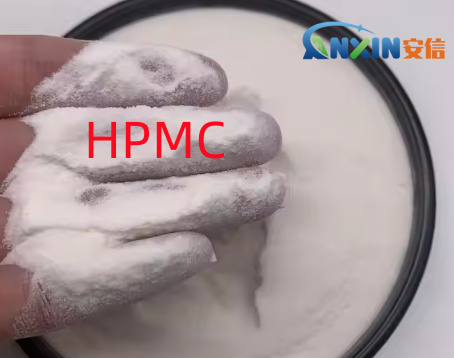Hydroxypropyl methylcellulose (HPMC) is a nonionic cellulose ether widely used in construction, medicine, food, cosmetics and other fields. It is made from natural polymer cellulose by introducing methoxy (–OCH₃) and hydroxypropoxy (–OCH₂CH(OH)CH₃) functional groups through etherification reaction. Due to the different types of substituents, degree of substitution (DS, methoxy degree of substitution; MS, hydroxypropoxy degree of substitution) and degree of polymerization, HPMC can be divided into multiple types to meet the functional requirements of different applications.

1. Distinguish by methoxy and hydroxypropoxy degree of substitution
The methoxy and hydroxypropoxy degree of substitution of HPMC directly affect its solubility, thermal gelation and surface activity.
High methoxy type HPMC: The methoxy degree of substitution is high, the solution has strong thermal gelation, and forms a stable gel under high temperature conditions. It is suitable for building materials that require water retention, thickening and bonding, such as tile adhesive, putty powder, and exterior wall insulation mortar.
Medium methoxy-medium hydroxypropoxy HPMC: balances solubility and gelation, commonly used in drug controlled release, food thickening, etc.
Low methoxy-high hydroxypropoxy HPMC: high thermal gelation temperature, good solution transparency, stable viscosity, suitable for cosmetics, eye drops and other applications that require high transparency and low irritation.
2. Classification by viscosity grade
HPMC is usually expressed in terms of the viscosity of a 2% aqueous solution, ranging from a few mPa·s to 200,000 mPa·s.
Low viscosity (3–100 mPa·s): good fluidity, mainly used in applications that require rapid dissolution and penetration, such as pharmaceutical coatings, spraying and emulsion stabilizers.
Medium viscosity (100–10,000 mPa·s): used in building mortar and gypsum products, taking into account both water retention and construction properties.
High viscosity (10,000–200,000 mPa·s): strong water retention and thickening ability, mostly used in tile adhesives, paste products, daily chemicals and food thickeners.
3. Classification by solubility characteristics and ion types
HPMC is a non-ionic cellulose ether with good water solubility and stability to electrolytes. Some products are modified to adapt to special applications:
Instant-soluble HPMC: After surface treatment, it can be quickly dispersed in cold water to form a uniform solution, which is suitable for rapid preparation of mortar or coating.
Slow-soluble HPMC: The dissolution rate is slow, suitable for avoiding agglomeration in high temperature environments, and is often used for large-volume mixing at construction sites.
4. Classification by functional modification
According to terminal needs, HPMC can be modified in a variety of functional ways:
Enzyme-resistant HPMC: It has better stability in microbial active environments and is used for specific foods and biomaterials.
High-temperature resistant HPMC: It maintains a high thermal gelation temperature to improve adhesion and water retention during high-temperature construction.
Surfactant-enhanced HPMC: Improves emulsion stability and wetting properties, used in latex paints and coatings.

5. Customized types by application field
Architectural grade HPMC: Emphasizes water retention, construction performance, anti-slip and adhesion, used in tile adhesives, putties, gypsum, and thermal insulation mortar.
Pharmaceutical grade HPMC: Meets pharmacopoeia standards, used in tablet coatings, sustained-release carriers, and eye drops thickeners.
Food grade HPMC: Used as a thickener, emulsifier, and fat substitute, widely used in baked goods and dairy products.
Cosmetic grade HPMC: High transparency, non-irritating, used in shampoos, lotions, and facial masks.
The type of HPMC is determined by the degree of methoxy and hydroxypropoxy substitution, degree of polymerization, and later modification. Different types have their own advantages in viscosity, thermal gelation temperature, water retention, dissolution rate, and application scenarios. Choosing the right type of HPMC requires considering specific application requirements, such as the requirements of building materials for water retention and construction properties, the requirements of pharmaceuticals for safety and dissolution properties, and the requirements of food and daily chemicals for transparency and taste.
Post time: Jul-23-2025